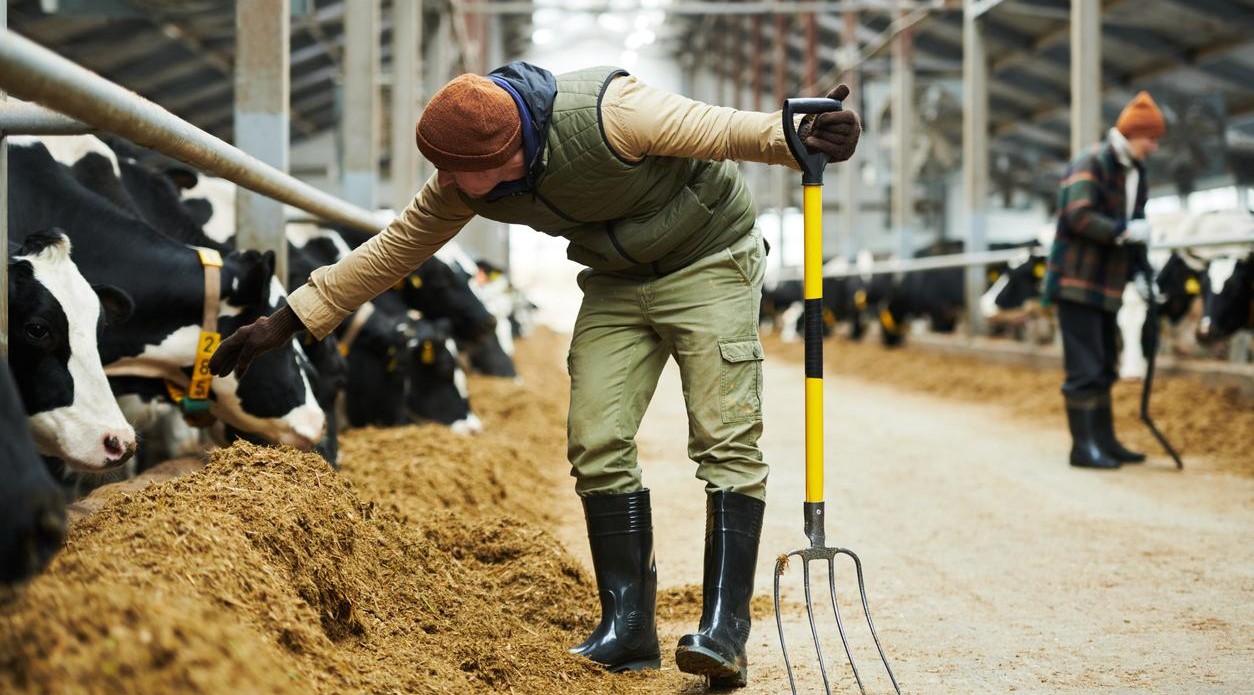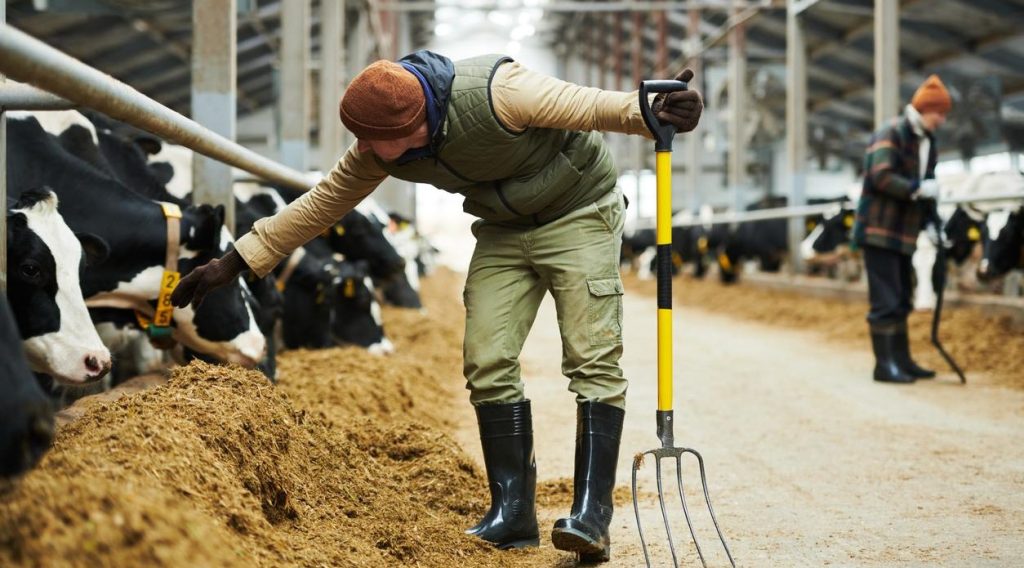LANSING, MI – The Michigan Department of Health and Human Services (MDHHS) is announcing the first case of influenza A (H5) virus identified in a Michigan farmworker who had regular exposure to livestock infected with influenza A (H5). This follows extensive public heath actions over the course of the last few months by the state of Michigan to allow farmworkers to monitor and notify local public health officials should they have symptoms. According to the Centers for Disease Control (CDC), the risk to the public remains low; the Michigan farmworker diagnosed with influenza A (H5) had mild symptoms and has recovered. To protect farm and farmworker privacy, additional details are not being provided.
The virus has been circulating in dairy and poultry farms across the U.S. this spring, and state and local public health officials have been closely monitoring for human cases, which can occur sporadically in individuals with close contact to ill animals. This virus has been associated with the ongoing multistate outbreak of influenza A (H5N1). As such, it is not unexpected that comprehensive testing identified a human infection. Information to date suggests this is a sporadic infection, with no associated ongoing spread person-to-person.
“Michigan has led a swift public health response, and we have been tracking this situation closely since influenza A (H5N1) was detected in poultry and dairy herds in Michigan. Farmworkers who have been exposed to impacted animals have been asked to report even mild symptoms, and testing for the virus has been made available,” said Dr. Natasha Bagdasarian, chief medical executive. “The current health risk to the general public remains low. This virus is being closely monitored, and we have not seen signs of sustained human-to-human transmission at this point. This is exactly how public health is meant to work, in early detection and monitoring of new and emerging illnesses.”
Michigan Department of Health and Human Services and local health departments continue to work closely with the Michigan Department of Agriculture and Rural Development (MDARD), farms and workers to conduct monitoring of the health of people exposed to ill animals.
“Since the first detection of influenza A (H5N1) in dairy cattle on March 29, Michigan has prioritized both the animal and human health aspects of this disease outbreak. Today’s news underscores the continued importance of limiting nonessential farm visits, including farm tours and field trips, as well as the use of personal protective equipment when working with livestock,” said MDARD Director Tim Boring.
MDARD continues to implement a proactive, science-based approach to mitigating the spread of influenza A (H5N1). Michigan’s response to influenza A (H5N1) has been a one-health approach, working with federal, state and local partners to address animal and public health concerns rapidly. Three U.S. Department of Agriculture (USDA) emergency management teams have been on the ground assisting MDARD in day-to-day responses at all impacted poultry facilities statewide. An epidemiological team from USDA is also deployed to further assist in tracing and testing within dairy herds to be able to provide real-time information.
Director Boring has taken proactive actions by signing an “Determination of Extraordinary Emergency” , which further protects Michigan’s poultry and livestock industries from the ongoing threat of influenza A (H5N1). Michigan’s order enhances USDA’s federal order, which was issued Wednesday, April 24.
MDARD has identified both dairy and poultry farms that have tested positive for influenza A (H5N1) in several Michigan counties. Risk is not limited to those geographies as additional detections may be possible.
MDHHS recommends seasonal flu vaccination for people working on poultry or dairy farms. It will not prevent infection with avian influenza viruses, but it can reduce the risk of coinfection with avian and flu viruses.
There have been two previous human cases related to bird and dairy exposure in the U.S. — one in Colorado in 2022 and one in Texas in 2024.
 Related news here
Related news here
During a recent press conference reported on by STAT, Dawn O’Connell, assistant secretary for preparedness and response at HHS, revealed that 4.8 million doses of H5N1 vaccine that has been stockpiled in bulk is in the process of being put into vials — a process called fill and finish. This is a little less than half of the vaccine believed to be effective against the current strain of H5N1 that is stored in the National Pre-Pandemic Influenza Vaccine Stockpile.
O’Connell said the decision to make the vaccine more readily deployable was taken a couple of weeks ago. “It takes a couple of months to be able to fill and finish vaccine doses… so I thought it made sense, given what we were seeing,” she said.
O’Connell said a decision to use the vaccine has not been made.
The outbreak in cattle, the first known to have occurred with this virus, was confirmed in late March, though evidence suggests that it had been underway for several months before testing revealed the cause of a drop in milk production among dairy cows.
Since then the U.S. Department of Agriculture has confirmed outbreaks in 52 herds in nine states, including Michigan, which has reported 19 infected herds — more than any other state. (The USDA’s most recent tally does not include four that Michigan reported since May 17.)
Experts following the outbreak believe the national count of affected herds significantly underestimates the scope of the problem. Both the USDA and the CDC have admitted that farmers have been reluctant to allow testing of their cows or their workers, afraid of the stigma attached to being associated with the outbreak.
But that has been less true in Michigan, where state officials have taken a uniquely aggressive stance in its public health response, informed, in part, by the devastating impacts H5N1 has had on the state’s poultry flocks in the past few years.
On May 1, Tim Boring, director of the state’s Department of Agriculture, declared an “extraordinary animal health emergency,” signing an order requiring Michigan farmers to step up their biosecurity measures. “Most farms have been good cooperators with that,” Boring told STAT in an interview.
Farmers have also been open to working with local health authorities to fill out questionnaires that could help investigators track how the virus is moving between dairy herds throughout the state. “Hundreds and hundreds of farm workers here in Michigan have been interviewed,” Boring said. “They understand the importance of understanding how this is moving around so we can limit the spread of this.”
Local health authorities have also been monitoring workers from farms with infected herds for symptoms — either through regular phone calls with farm supervisors or automated text messages that ask if they’ve been experiencing conjunctivitis or any flu-like symptoms, even mild ones. Testing is being offered to any symptomatic workers who’ve been exposed to animals on affected farms or are living in congregate settings with people who’ve been exposed.
In an interview Wednesday afternoon, Bagdasarian, the Michigan health official, described the discovery of a human case as a sign these efforts to find new infections are paying off. “Michigan has really been one of the states leading in terms of testing, so it’s not surprising that we have picked up on this sporadic case,” she said. At least 35 people have been tested so far, she said. This case is the first to have come back positive.
Bagdasarian said officials have seen no evidence of secondary infections. But the state is not yet conducting serological surveys — looking for antibodies to H5N1 in the blood of farm workers and those they’ve been in contact with — to determine if there have been unreported cases, and possibly even spread from those individuals to others.
“We’ve always talked about the need to do additional studies to do additional engagement, and to do a big look at serology, especially for people who may have remained asymptomatic throughout,” Bagdasarian said. “That would be a next step.”
Shah said the CDC would very much like to conduct serology studies among dairy farm workers, including those, like the Michigan individual, who test positive. “At this time, we’re not there yet,” he said.
Eric Deeble, the USDA’s acting senior advisor for H5N1, announced during the news conference that additional financial incentives are being planned to try to entice dairy farmers to report infections in their herds and take steps to reduce the risks to cows and workers on the farms. Compensation for lost milk — a substantial drop in milk production is the most notable sign of infection in a herd — is planned, but will take a few more weeks to finalize, he said.













